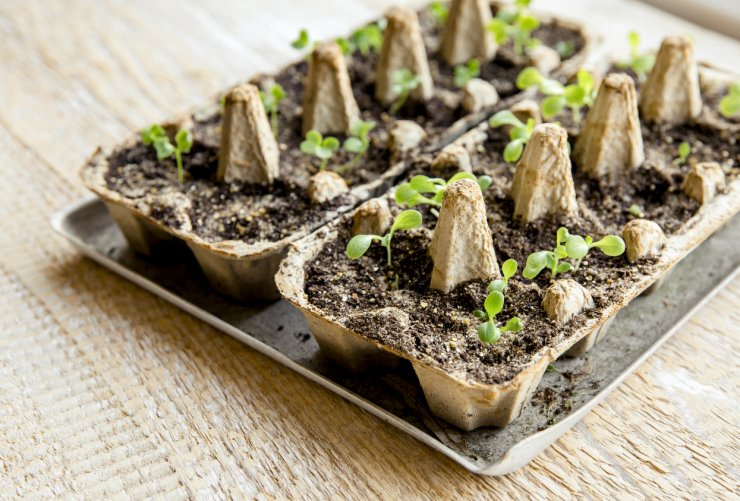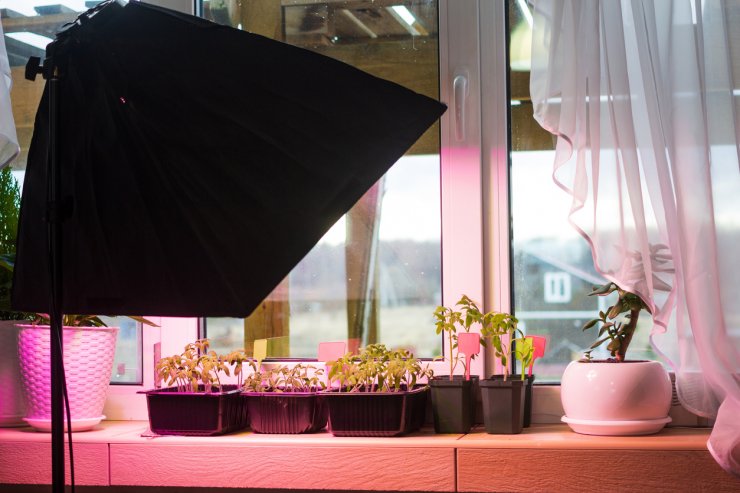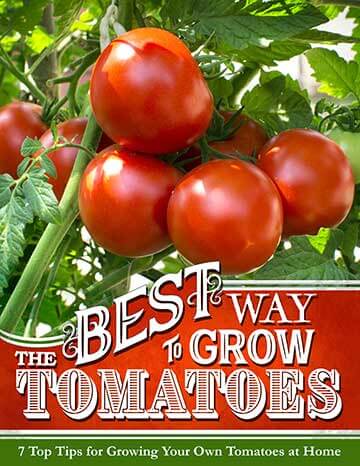
Starting plants indoors is a time-honored tradition in grade-school classrooms across the country. At some point, most of us have probably watched excitedly as a little sprout breaks out of the seed on its way to becoming a bean plant. Honestly, it still seems amazing every time I see a little seedling emerge from the soil. Maybe that’s why I enjoy gardening so much; it’s endlessly fascinating, not to mention those fresh veggies are unbeatable.
It just so happens that there’s a lot more to starting plants indoors than the cool sciencey stuff. For those of us who live in cooler climates, it adds weeks to the growing season. It’s also a great way to save money, since seeds are a lot less expensive than seedlings.
Of course, any indoor garden has to contend with the issue of limited natural light. So how do you work around that when you’re just getting those seeds going?
Discover 7 top tips for growing, harvesting, and enjoying tomatoes from your home garden—when you access the FREE guide The Best Way to Grow Tomatoes, right now!

No light? No problem. Starting plants indoors is as easy as could be.
Before we get into the issue of light, let’s look at a few general tips for successfully starting plants indoors.
- Choose your seeds carefully. Retailers like Amazon are good for some things, but for vegetable seeds, you’re probably better off sticking to trusted and known sources. If you prefer to buy in person, your local gardening store is usually a good option.
- Consider your region. Where you live and when your last frost comes will determine when you need to start your seeds.
- Find the right location. Your seeds and seedlings need somewhere they can grow undisturbed by pets, kids, cold drafts, and excessive heat.
- Use one container per seed. I like to use the paperboard egg trays because they’re easy to transfer once the seeds are ready, and I can put them right into the ground. You can also buy those plastic cells that most garden stores plant their seedlings in.
- Use the right “soil.” When you’re starting plants indoors, you’ll most likely use a seed-starting mix rather than actual soil. These mixes are specially blended to support young seedlings and give them the nutrients they need to grow.
Discover 7 top tips for growing, harvesting, and enjoying tomatoes from your home garden—when you access the FREE guide The Best Way to Grow Tomatoes, right now!
So what to do about light? Depending on the plant, your seedlings could need 12 to 16 hours of sunlight each day in order to thrive. Unless you live southern Florida, you’ll have a hard time getting that kind of light in March or April when it’s time for starting plants indoors. The only real solution is to invest in a grow light.
You don’t need to spend a lot of money on one. A fluorescent light can work well enough in conjunction with the natural light you have. Here are a few suggestions for making that work.
- Find the right lighting. Place your seedlings where they will receive as much natural light as possible, but also where you won’t need to move them continuously. (This is assuming you aren’t planning for a full indoor growing setup. If that’s the case, your basement can work well.)
- Keep it close. Keep your fluorescent light or grow light within a couple inches of the top of the tallest seedling. You don’t want your plants to work too hard to get the light they need.
- Do give your seedlings some nighttime. Set a timer or a reminder on your phone to turn off the lights and let your seedlings rest for 6 to 8 hours each night.
- Not just any light will do. If you buy a lighting setup, get one specifically for indoor growing. Plants need a broad spectrum of light, so if you are going to spend money on grow lights, make sure you get a full-spectrum lighting system.
- Harden them off before you move them permanently outdoors. You don’t want to shock your seedlings, so give them a little outside time each day for at least a week before you transplant them.
That’s pretty much it. Starting plants indoors is a great investment in working toward a larger garden and a longer growing season.
What steps do you take when you’re starting plants indoors? I’d love to hear your ideas in the comments.
Discover 7 top tips for growing, harvesting, and enjoying tomatoes from your home garden—when you access the FREE guide The Best Way to Grow Tomatoes, right now!




